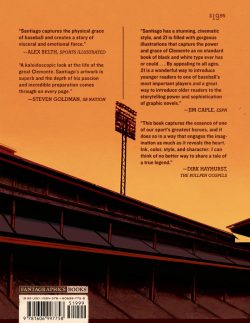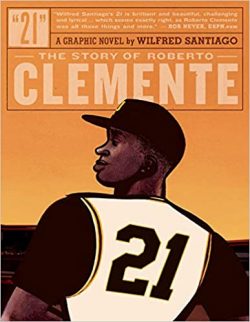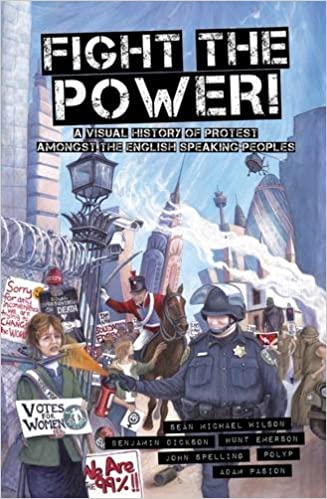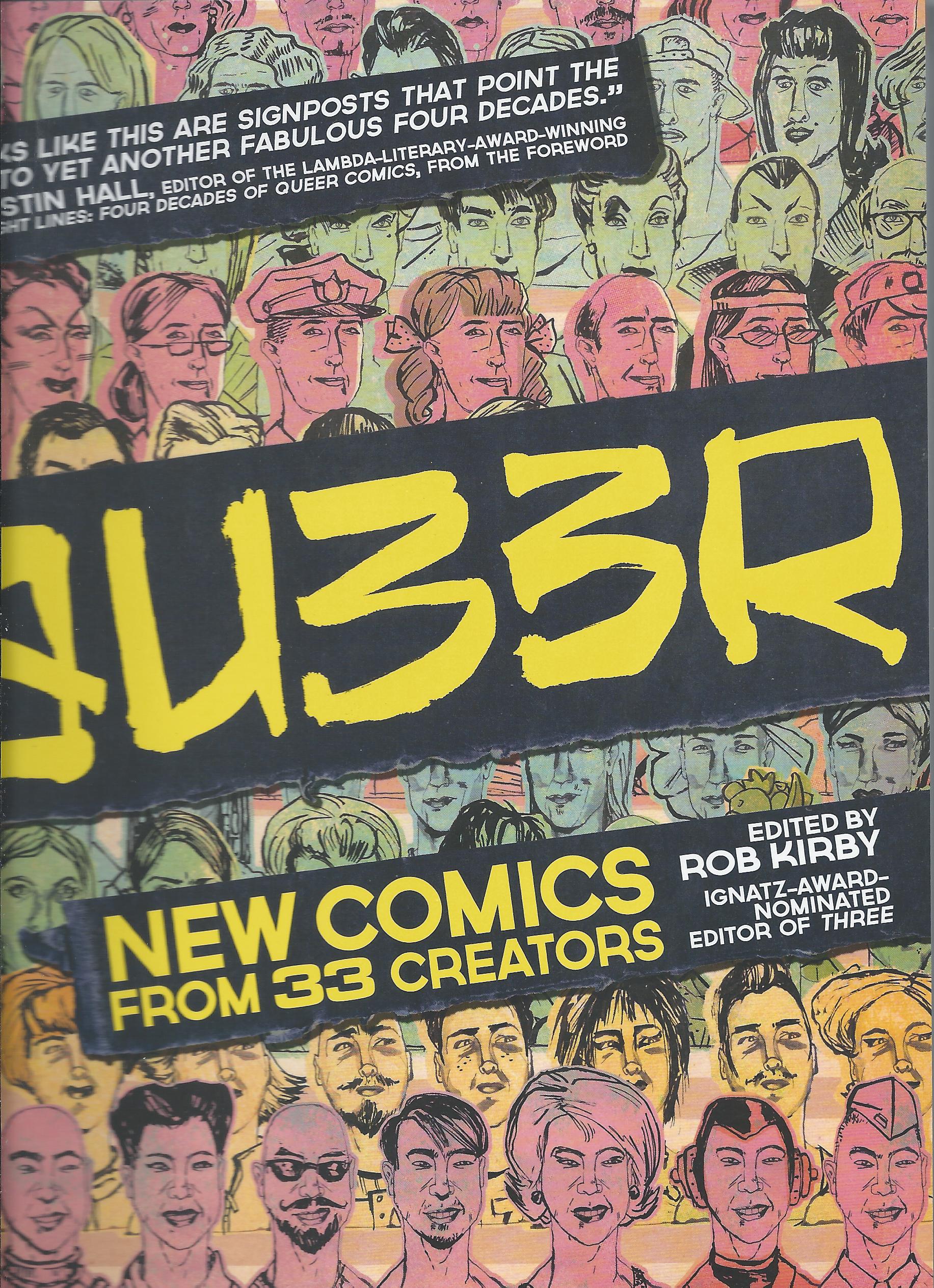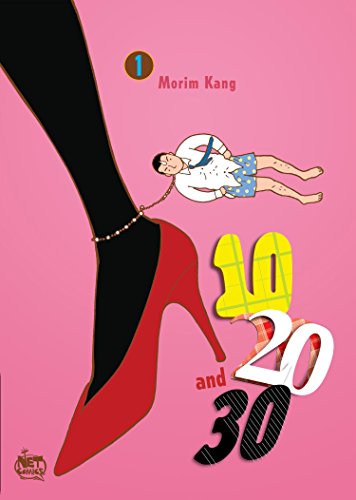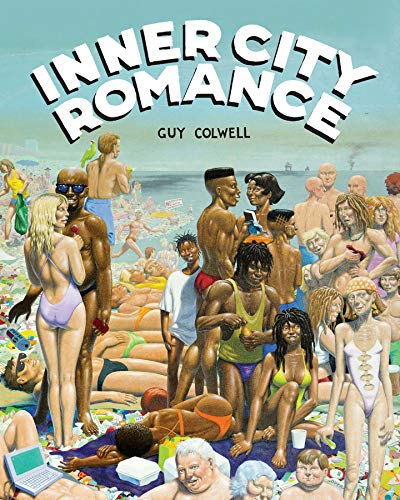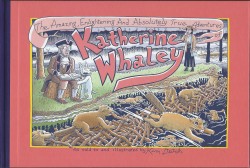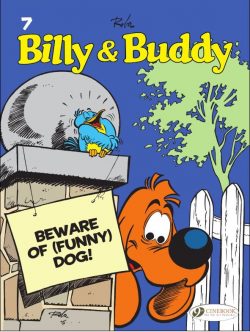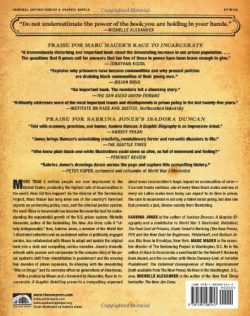

By Marc Mauer & Sabrina Jones (The New Press)
ISBN: 978-1-59558-514-7 (TPB)
When I first read it, this book made me really, really angry.
That’s okay though; it was supposed to.
I read it again yesterday. Still angry, so it’s your turn…
Marc Mauer has worked to end criminal inequality since 1987. In 2005 he became Executive Director of The Sentencing Project, a non-profit organisation working for nearly 35 years to establish “a fair and effective U.S. criminal justice system by promoting reforms in sentencing policy, addressing unjust racial disparities and practices, and advocating for alternatives to incarcerationâ€.
The Project provides training for American defense lawyers; explores methods of changing the ferociously slanted legal system in regard to socially disadvantaged and racial minorities; seeks to debunk politically advantageous myths about the efficacy of incarceration, and works towards reducing the USA’s reliance on prison sentences through advocacy and by affecting policy on how best to safeguard the citizenry and punish criminals.
Highlighting disturbing trends and inequities in the criminal justice system since 1986 – especially in the treatment of non-white and juvenile offenders – the organisation has been consulted by Congress, The United States Sentencing Commission, U.S. Commission on Civil Rights and other Federal Agencies, subsequently overseeing changes to national drug policy guidelines and helping shape The Fair Sentencing Act of 2010.
I’m assuming they were not contacted by the Trump Administration when Orange Donnie decided to free up all those Federal Cells on Death Row at the end of his regime…
The Sentencing Project particularly concerns itself with combating racial disparity in detention, cataloguing various forms of felony disenfranchisement and has led campaigns to end the still-widespread practice of condemning juveniles to life without parole, as well as working to beef up the mandate of The Juvenile Justice and Delinquency Prevention Act.
All of which made Mauer the perfect person to write 1999’s landmark exposé Race to Incarcerate, which shockingly detailed the causes and minutia of the meteoric rise in America’s prison population since 1970.
Mauer followed up in 2002 with Invisible Punishment: The Collateral Consequences of Mass Imprisonment (co-edited by Meda Chesney-Lind). A telling indictment of a flawed, cruel, unfair and unscrupulous system, Race to Incarcerate was re-released in 2006, and in 2013 the powerfully polemical tract was brilliantly updated, revised and adapted by cartoonist Sabrina Jones into a ferocious pictorial broadside, re-positioned to engage and inform the general public and especially older kids who were most likely to experience the wrong arm of the Law.
Jones is a painter, illustrator, scenic artist, writer and activist whose evocatively lush and organically primitivist work has graced such politically aware publications as Studs Terkel’s Working, FDR and the New Deal for Beginners, The Real Cost of Prisons, graphics collective World War 3 Illustrated and autobiographical anthology GirlTalk amongst many others. Her most notable solo project to date is the beguiling Isadora Duncan: A Graphic Biography.
Following an evocative Foreword from Civil Rights lawyer and author Michelle Alexander, and heart-rending yet hope-filled Preface by author Mauer, the bare, bald facts are starkly presented in ‘Introduction: U.S. Prisons from Inception to Export’: tracing the invention of penitentiaries by the Puritans to the current situation where America has the disturbing honour of being number 1 country in the field of locking up citizens. The USA still boasts the highest rate of incarceration in the world – despite heavy and ever-increasing competition from old rivals Russia and China.
Perhaps that’s because they don’t just execute their criminals… no, wait…
The stunningly effective visual history lesson is followed by the American sector’s political background and lowdown on ‘The Rise of the “Tough on Crime†Movement’ from 1973: examining the divisive policies and calculated duplicity of Nixon and the Republicans in the wake of the triumphant Civil Rights Movement, and tracking the switch from programs of rehabilitation to specious but vote-winning punitive prison policies.
The situation culminated with ‘The Triumph of “Tough on Crime‒ which casts a spotlight on the disparities in dealing with increasing drug abuse during the rise of the Black Power movement and focuses on the draconian, tragically trend-setting policies of New York Governor Nelson Rockefeller, who instigated the harshest drug laws in the USA when ‘The Rock Gets Rolling’…
With prison populations rising rapidly and disparately, things took a turn for the worst from 1980, as seen in ‘Crime as Politics: The Reagan-Bush Years’, after which a particularly heinous travesty of justice is spotlighted in ‘Kemba Smith: a Case of Extreme Sentencing’.
The problem was not simply the self-serving prejudice of one party as poignantly, frustratingly illustrated in ‘Crime as Politics: The Clinton Years’, but plumbed new depths of hypocrisy in 2000 as ‘Crime as Politics: The George W. Bush Years’ stomach-churningly reveals…
Over the last 60-odd years, the whole situation seems to have been predicated upon a few fallacious, if not deliberately disingenuous dictums clearly exposed in ‘The Prison-Crime Connection’ which inexorably led to a monumental, institutionalised injustice system generating ‘Color-Coded Justice’: a concentration on profiling or criminality as seen in ‘The War on Drugs and African-Americans’.
The biggest shock however comes in ‘A New Direction’ as the authors reveal that – despite all the rhetoric and entrenched biases – the situation was actually improving as more and more States abandoned old, costly, failing punishment policies to try something new and humane – and more cost-effective. I wonder how the years 2016 to 2020 affected those policies?
After decades where States stopped building schools to pay for bigger and bigger prisons – with no appreciable effect other than depriving kids of an education – various localities tried different approaches; finding that where costly incarceration and harsh punishments don’t work, social programs, rehabilitation projects and investment in people do…
Coda: Â Also included in this (long overdue for an update) book are details of outreach projects asking readers to contribute books to prisoners or become pen-friends with inmates, illustrated by Carnell Hunnicutt, a long-term inmate whose comics about his penal experiences and prison issues initially inspired Mauer to release Race to Incarcerate as a graphic novel (now available in paperback and digital editions).
Packed throughout with shocking, well-documented, specific cases and backed up by an eye-watering torrent of shameful statistics, this is a work with the potential to change society, so, with British politicians increasingly emulating idiotic mistakes and politically-advantageous, socially destructive criminal justice policies of our oversea friends, Race to Incarcerate remains a book every school library and home should have.
Moreover, if you care about people and justice it’s one you must read…
© 2013 by The New Press, based on Race to Incarcerate by Marc Mauer © 1999, 2006 by The Sentencing Project. ‘Kemba Smith: a Case of Extreme Sentencing’ © 2013 by Sabrina Jones. Foreword © 2013 by Michelle Alexander. Preface © 2013 by The Sentencing Project. All rights reserved.

